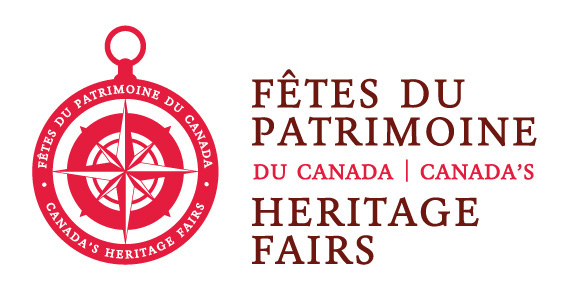Harlowe S.

Tintamarre
Harlowe S.
LeMarchant - St. Thomas Heritage Fair
Halifax, NS
Tintamarre is an Acadian tradition where people make noise, wear Acadian colours and gather in a parade. The first Tintamarre occurred in 1955 when Archbishop Robichaud asked everyone in Moncton, New Brunswick, to come out at 7:00 p.m. at the ringing of the church bells. He asked everyone to bring out household items to make noise because it was the 200th anniversary of the Acadians being deported. He wanted everyone to know that even after 200 years, the Acadians still live on.
To this day, Tintamarres are held every year on August 15th, National Acadian Day. Every four years, there is a giant Tintamarre that occurs at the Acadian World Congress. 5000 people came to the first Tintamarre in 1955. The Tintamarre that I took part in had over 10,000 people in it.
Tintamarre has three main traditions. The first Tintamarre tradition is to wear Acadian colours: blue, red, white and yellow. These are the colours of the Acadian flag. The second tradition is to make noise. Common ways to make noise are banging spoons on pots, shouting, blowing horns and whistles, or playing musical instruments. Traditional Acadian instruments include fiddles, spoons, guitars, and the accordion. The goal is to make a lot of noise to represent the heartbeat of Acadians. Tintamarre comes from the Acadian word meaning “clangour” or, in English, “racket”. The third tradition is making giant papier mâché puppets. Acadians started making puppets to act out religious stories and create theatre. Tintamarre, puppets are often 8 to 10 feet tall. These puppets often represent family names, like Pothier, LeBlanc, and Robichaud. The puppets are interesting to look at and add excitement to Tintamarre.
What sources and evidence did you consult for your project? What different perspectives did they provide on your topic?
I started by reading about Acadian history through the French and Acadian online encyclopedias. Then I read news articles on recent local Tintamarres and past Tintamarres. It was difficult to find information on why Acadians have large puppets in their parades, however, I found an article on the history of Acadian puppet making and theatre. My mother’s family is Acadian, and I spoke with my Aunt about growing up in an Acadian household, and what it was like to grow up in a small French community, surrounded by a larger English community.
My Aunt said it was difficult at times, as her language (and her accent) were made fun of by non-Acadians. However, she loves her culture and makes the best rappie pie when I visit. My mother took me to the Historical Acadian Village of Nova Scotia in Pubnico to learn about Acadian music, food, and games. She also taught me how to play the spoons. Lastly, I found a video in CBC archives of the first Tintamarre in 1955, it was very cool to watch the first Tintamarre.

What is the historical significance of your topic?
My project is focused on the heritage of the Acadian people. Acadians arrived in Canada in the early 1600s. They came from France and settled in the eastern part of Canada with the aid of the Mi’kmaq people. In 1755, the British started expelling the Acadians. More than 10,000 Acadians were deported from Canada, and at least 5000 died. Although Acadians were allowed back into Canada a decade later, the impact of trying to erase their culture is still felt today.
Canada is a bilingual and diverse country, and Acadian culture is part of that. There are currently over 500,000 Acadians living in Canada. Tintamarre recognizes the harm done to the Acadian population while celebrating their ongoing spirit.
Why did you choose this topic?
I chose the topic of Tintamarre because I admire the Acadian culture. Last summer I walked in a Tintamarre for The National Acadian Congress and it was very fun. It was very loud but very special because my whole family took part with me. My mother’s family are Acadian. My aunts and cousins are bilingual and live close to the Acadian town where my great-grandmother was born. My Grandmother moved to Halifax, where I was born, but she celebrates her Acadian heritage through her cooking and stories. I am in early French immersion, so one day I will be bilingual as well. Being part of a Tintamarre really made me appreciate my own Acadian heritage. I feel lucky to be a part of Acadian culture.

